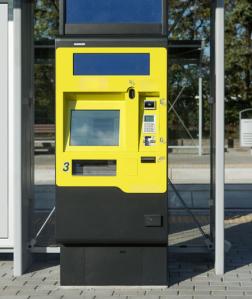LCD displays add a lot of value to electrical products. However, the soft polarising film attached to the front surface of the displays are delicate and need protection, especially when used for outdoor applications, usually in the form of a protective glass screen.
Glass can be strengthened using different methods, and this article will examine what they are and the pros and cons of each.
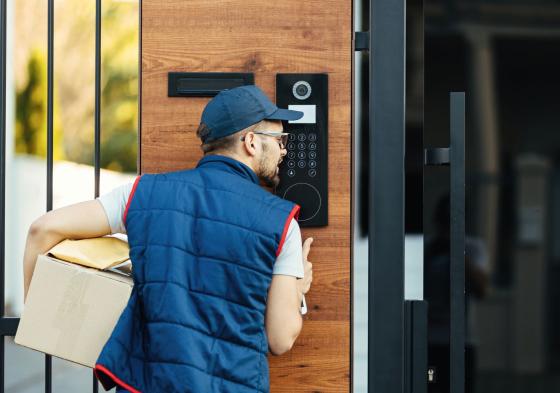
Why strengthen?
Glass in its basic annealed state can be brittle and easily broken if untreated, and in doing so will splinter into sharp shards that can easily cause damage to the skin. Strengthening the glass will make it much harder to break and depending on the strengthening method used, can prevent it from breaking into sharp pieces which can cause serious personal injury. There are two different methods that are normally used to strengthen glass - physical tempering and chemical strengthening. Each has its own pros and cons.
What is physical tempering?
The glass is slowly heated from room temperature to around 700oC, where it enters a softened state. After it has been heated, the glass is then moved to a cooling zone where it is cooled rapidly to room temperature. This heating and cooling process alters the outer surface of the glass by giving it a higher compression than its interior, causing it to come under tension. This altering of the states of the surface and interior of the glass combine to make tempered glass typically 5 times stronger than ordinary annealed glass. Tempered glass like all things, can be broken but when it does, it breaks up into small granules instead of sharp shards of glass making tempered glass much safer by comparison than untreated glass and less likely to cause serious skin damage.
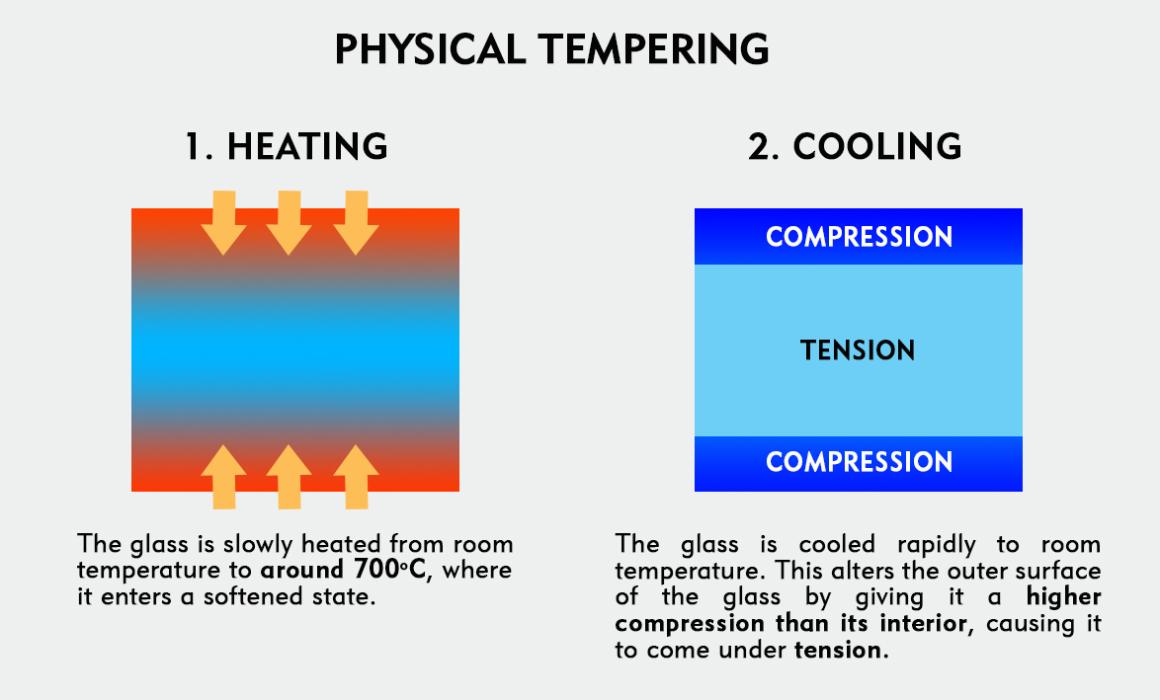
Advantages:
- Breaks into small granules rather than sharp shards that cause serious skin damage
- Typically, 5 times stronger than ordinary annealed glass making it harder to break
- Higher resilience to thermal stress
- Can be used with cover glass from 3mm thick
Disadvantages:
- Lower bending strength
- Not suitable for glass thickness below 3mm thick
- Slight reduction in optical performance
What is chemical strengthening?
This process involves the glass being soaked in a KNO3 (potassium nitride) salt bath solution at a temperature of around 300oC. The smaller sodium ions on the surface of the glass are displaced by larger potassium ones. Because they are larger molecules on the same surface area, the potassium molecules are squeezed tighter together, forming a stress layer on the surface of the glass, leaving the interior of the glass in tension state.
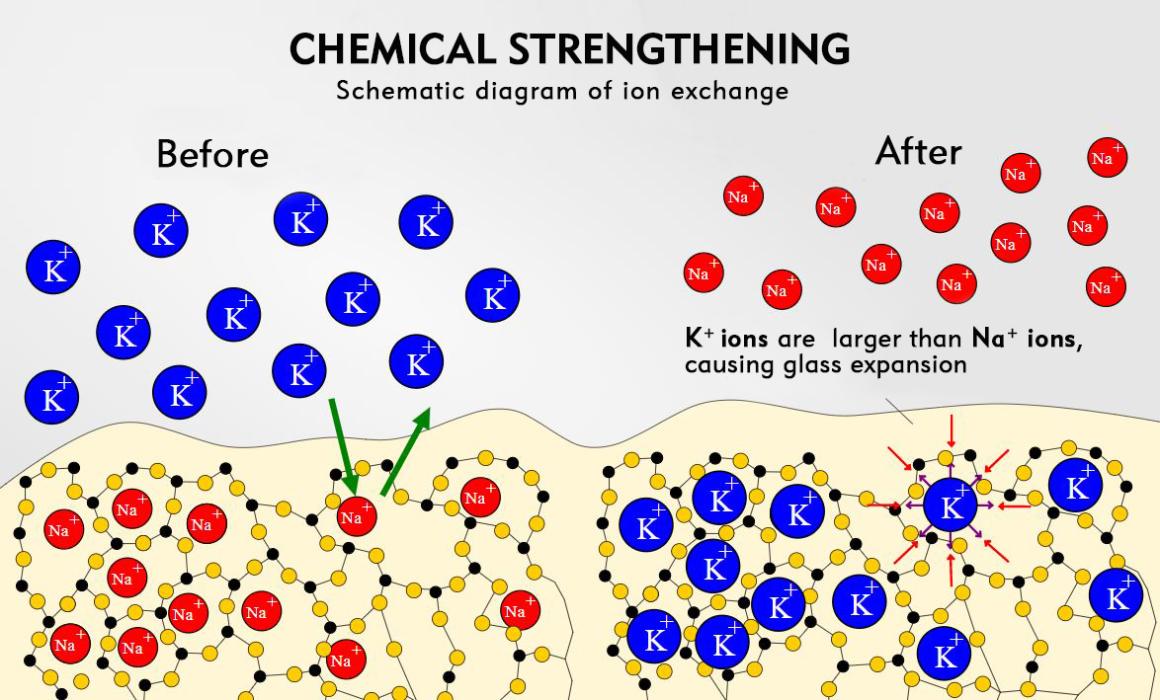
Source image: Materials Science & Engineering Student
Advantages:
- Suitable for thinner cover glass and handheld applications
- High strength
- No impact to optical performance
- Good bending strength
- Smoother surface finish
Disadvantages:
- Unless laminated, can break into flakes with sharp edges
- Can’t be used with thick cover glass
Depending on the thickness of glass used, there may not even be a choice to be made at all – chemically strengthened glass is more suitable for thinner glass, and physically tempered glass is better for thicker screens. However, there is an area around 3mm where both types of toughening can be used, and it is there that decision has to be made.
Both methods of toughening produce glass with a hardness rating of 7 out of 10 on the Mohs scale. Physical tempered glass can shatter spontaneously, but when it does shatter, it breaks into small pieces without sharp corners. When chemically strengthened glass fragments, it breaks into flakes that have sharper corners.
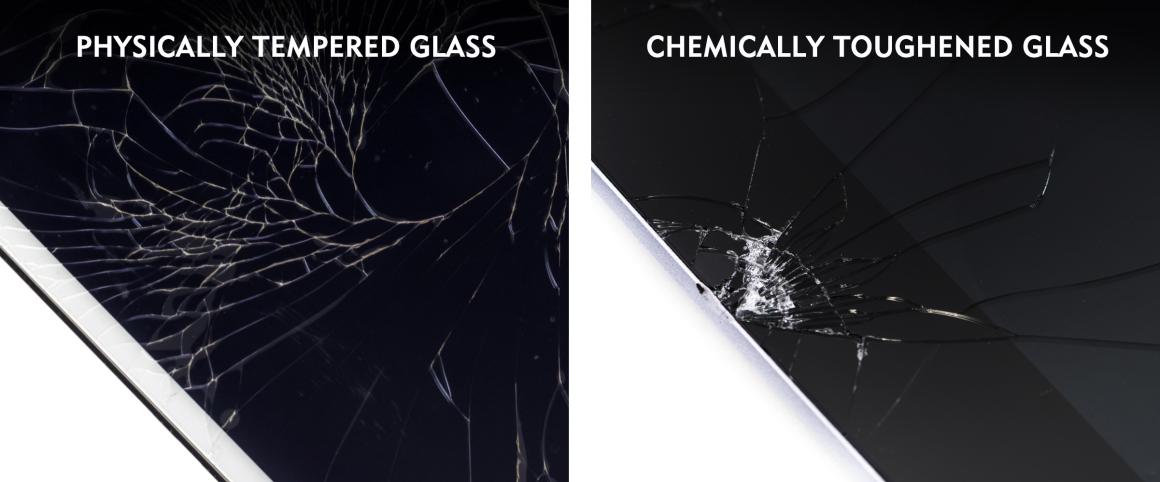
The chemical process results in better optical performance and a smoother finish than the physical one, and it also has more strength against bending. However, physically tempered glass has a greater curve. This curvature could be either beneficial or a drawback depending on the application.
Chemical Strengthening vs Physical Tempering summary
| Chemically Strengthened | Physical Tempered | |
| Optical Performance | ⭐⭐⭐⭐⭐ | ⭐⭐⭐ |
| Surface Stress Resistance | ⭐⭐⭐⭐⭐ | ⭐⭐⭐⭐ |
| Surface Smoothness | ⭐⭐⭐⭐⭐ | ⭐⭐⭐ |
| Bendability | ⭐⭐⭐ | ⭐ |
| Sharpness of Shattered Glass | ⭐⭐⭐ | ⭐⭐⭐⭐⭐ |
| Supporting IK ratings | ⭐⭐⭐ | ⭐⭐⭐⭐⭐ |
| Average Cost | ££ | £ |
Want to discuss the best strengthening option for your nex display project? Get in touch with our display expert!

